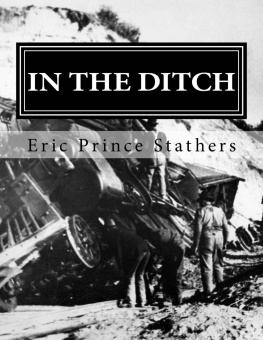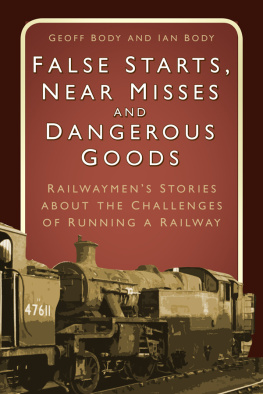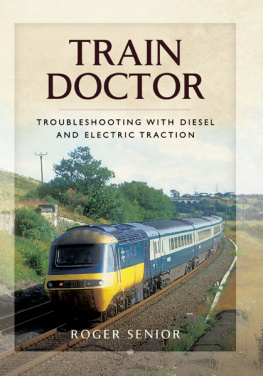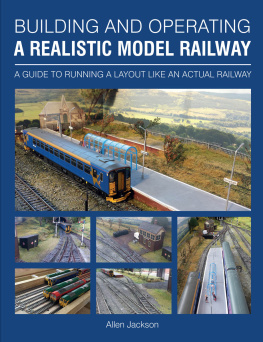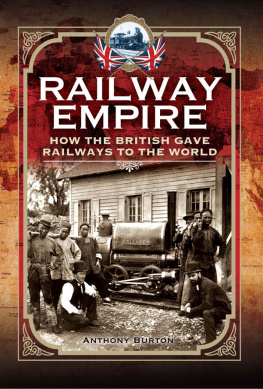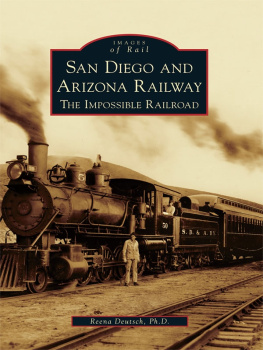IN THE DITCH
Stories of the Pacific Great Eastern Railway 1929-65
ERIC PRINCE STATHERS
Stathers & Associates LLC Publishing
Copyright, Jacob Eric Stathers
All rights reserved. No part of this publication may be reproduced or transmitted in any form or by any means, electronic or mechanical, including photocopy, recording, or any information storage and retrieval system, without permission in writing from the publisher.
First Printing 2016
LIBRARY OF CONGRESS CATALOGING-IN-PUBLICATION DATA
Stathers, Eric Prince, 1907-1986.
In the Ditch, Stories of the Pacific Great Eastern Railway 1929-65 / Eric Prince Stathers.
pages cm.
Includes index of names.
ISBN-13: 978-0-692-56282-6
ISBN-10: 0692562826
- Railroads British Columbia, Canada History I. Title
- Railroads Cars Maintenance and Repair
- British Columbia History
Text set in Garamond
Designed by Jacob Eric Stathers, Kim Stathers, and Nicola Stathers
LIBRARY OF CONGRESS CONTROL NUMBER: 2015920057
Stathers & Associates LLC Publishing, Bellevue, Washington, 98005
Printed in the United States of America
DEDICATION
This book is dedicated to Mary Stathers, known to her grandchildren as Nana Mae.
The front cover picture of an engine on its side in the ditch was taken to the best of my knowledge north of Lillooet alongside of the Fraser River. This happened before my time with the railway but aptly illustrates the term in the ditch and the difficulties that the men had to overcome before they were able to get that locomotive back on the rails without the modern wrecking equipment that is available today.
It didnt help much to hear people talk about the P.G.E. as Please Go Easy or Prince George Eventually, and other clever jibes, when our men were working their guts out to keep the road open without the proper equipment.
Eric Prince Stathers
CONTENTS
FOREWORD | |
| COME WEST, YOUNG MAN | |
| FATE TAKES A HAND | |
| THE BIG SNOW | |
| UNDERWATER SALVAGE | |
| SAVED BY THE SWITCH | |
| MUTINY AT MILE 65 | |
| TRAGEDY AT SETON LAKE | |
| CHEAKAMUS TO THE LAKE DISTRICT | |
| LAKE DISTRICT DERAILMENTS | |
| FRASER CANYON FROLICS | |
| STORIES OF THE CARIBOO | |
| PUSHING NORTH | |
| DAWN OF A NEW ERA | |
| THE BIG HOOK | |
| RUNAWAY AT MILE 110 | |
ABOUT THE AUTHOR | |
ACKNOWLEDGMENTS 173
GLOSSARY 174
INDEX OF NAMES 176
FOREWORD
It was 1956 before the trains ran from Squamish to North Vancouver, and 1958 before the highway opened. You went by boat from Vancouver to Squamish back then. I belonged to the Varsity Outdoor Club (VOC) in Vancouver, where I got to know Harold and Jack, sons of Eric Stathers. In 1954 a small party of us coming back from a trip to Mount Garibaldi missed the boat, and wound up sleeping in the Stathers front room that night. I kept in close touch with the boys after that.
It was the banjo playing that made the book possible. Eric played a tenor banjo, and I played the standard banjo. We knew many of the same songs. The banjo was always with me on visits at Squamish to see Jack, and at Lillooet to see Harold. When I came back from England for a Christmas visit in 1970, Eric picked me up in North Vancouver and took me to Squamish for a visit. When Eric secured his summer camp at Big Gun Lake, I went along, and cut down the first tree. I took the banjo with me. We sat on the porch, and he told me stories about the railway.
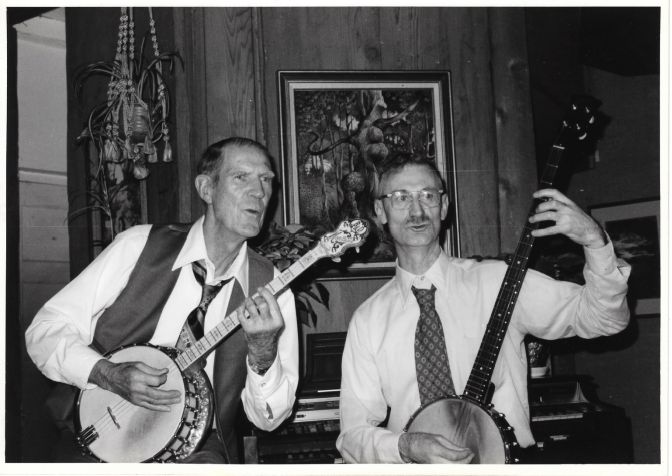
Eric Stathers and Dick Lazenby, Brackendale Art Gallery, Squamish, B.C., 1979.
There were many family occasions. When Jacks daughter Lynn was married Eric and I played and sang. At Eric and Marys 50 th wedding anniversary party, my band played for the dance, and he sat and played in my chair for a couple of numbers. When Conductor Bud Butterworth retired, Eric and I played banjo in one of the Budd Cars riding from Squamish to Lillooet and back.
Eric had started with the P.G.E. Railway in September 1929 as Car Shop Foreman. He, and his team, because of their detailed knowledge of the locomotives and rolling stock, became the wrecking crew which attended accidents. In my history project about North Vancouver I was doing extensive research, part of which involved scanning all of the newspapers. The P.G.E. operated service on the North Shore between 1914 and 1928, and became connected to Squamish in 1956 part of history. I found some train wreck stories in the Vancouver papers, and asked Eric about them. He could remember all sorts of incidents and details. I asked him to write these down, but he said no, writing was too slow and typing worse.
So I got hold of a small tape recorder and microphone. He recorded a tape, and I took it back to North Vancouver and transcribed it, adding material to link things up, and handed him the typed version. He said, This is not right! But he rounded up all of his old detailed notebooks, and re-told the stories in a more accurate version, which I took home and transcribed, with more linking material. He made further improvements, and had it typed in Squamish. I took a manuscript to a Vancouver publisher, who said they had no market for railroad stories. But I arranged for a copy to be put into the British Columbia Archives in Victoria. I loaned my copy to one of the P.G.E. Company Officers, Barry Hunt, who had been one of Erics apprentices. Barry told me that he had stayed up all night reading it, and said that the accounts were as he remembered them.
Dr. A.L. (Dick) Lazenby
North Vancouver, B.C., Canada
December 2015
1 COME west, young man
1929-1930
I woke up to the sound of the huge steam whistle that dominates the town and surrounding countryside, saying in its booming voice, Get up, lads, its time to get up and go to work. It was another day in July 1929, in the town of Transcona, Manitoba, where the large railway shops of the Canadian National Railways are located. As I groped for my pants and shirt I had a feeling that somehow or other, this day was going to be different than those of the past five months, since my marriage to my young wife Mary. Just recently our union committee had recommended me for the new position of carman apprentice instructor for the shops. The job was to be the first step up in promotion to foreman, and possibly further up the railway ladder. Maybe this would be the day the promotion was to be confirmed.
It was only eight months since I finished the five-and-a-half year apprenticeship course, but since I had been nearly always in the top ten amongst some forty to fifty apprentices in the Railway Carmans trade, I suppose they thought me worth considering for the position. After having a good breakfast with my young and lovely wife, I toddled off to work. Early that afternoon my foreman told me that Mr. Bristol, our classroom instructor, wanted to see me. I wonder what he wants now? I thought. Mr. Bristol had been like a second father to me, though a rather stern one, and sometimes he would get me to do a little job that he required for the classroom. So with the foremans permission I wended my way between the various shops until I came to the classroom, which was in the main offices of the Car Department. As I stepped through the door, after knocking and being told to enter, I saw a dark handsome man with curly hair and eyeglasses. He was gesturing with his arm, upon which was an odd hand, which had been injured somehow, and had only one remaining finger. Mr. Bristol introduced this man as Mr. Bailey from British Columbia.
Next page
